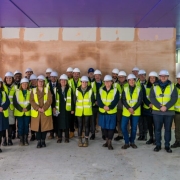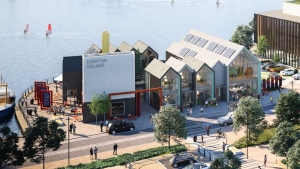Planning permission has been granted for West Lothian Council to construct 18 houses, 30 flats and one staff building with landscaping, car parking and associated works.
Part of this development will see West Lothian Council build housing to support homeless young people and a further affordable housing project, both located at Almondvale Crescent, Livingston. This project will see West Lothian Council become one of the first councils in the country to use modular construction to build housing. The development is to be built on a vacant site at Almondvale Crescent.
Plans for the supported housing for young people consists of 28 one bed flats. Flexible office space will be provided for staff members along with staff overnight accommodation to provide dedicated space and privacy, whilst still being on hand to assist and support the young people develop the skills they need to live and manage their home independently.
The affordable housing element of the development will provide 20 homes consisting of 18 houses (a mix of two and three bed homes) and two flats. With planning approval now in place, it is hoped that work will commence on both projects from June.
Executive councillor for housing services, George Paul, said: “There is a critical need to deliver social housing options for homeless young people. Significant demand is also present for mainstream social housing in the Livingston area. It is pleasing that planning permission has been approved for this project and we look forward to the day that young people and other tenants and will be able to move in.”










